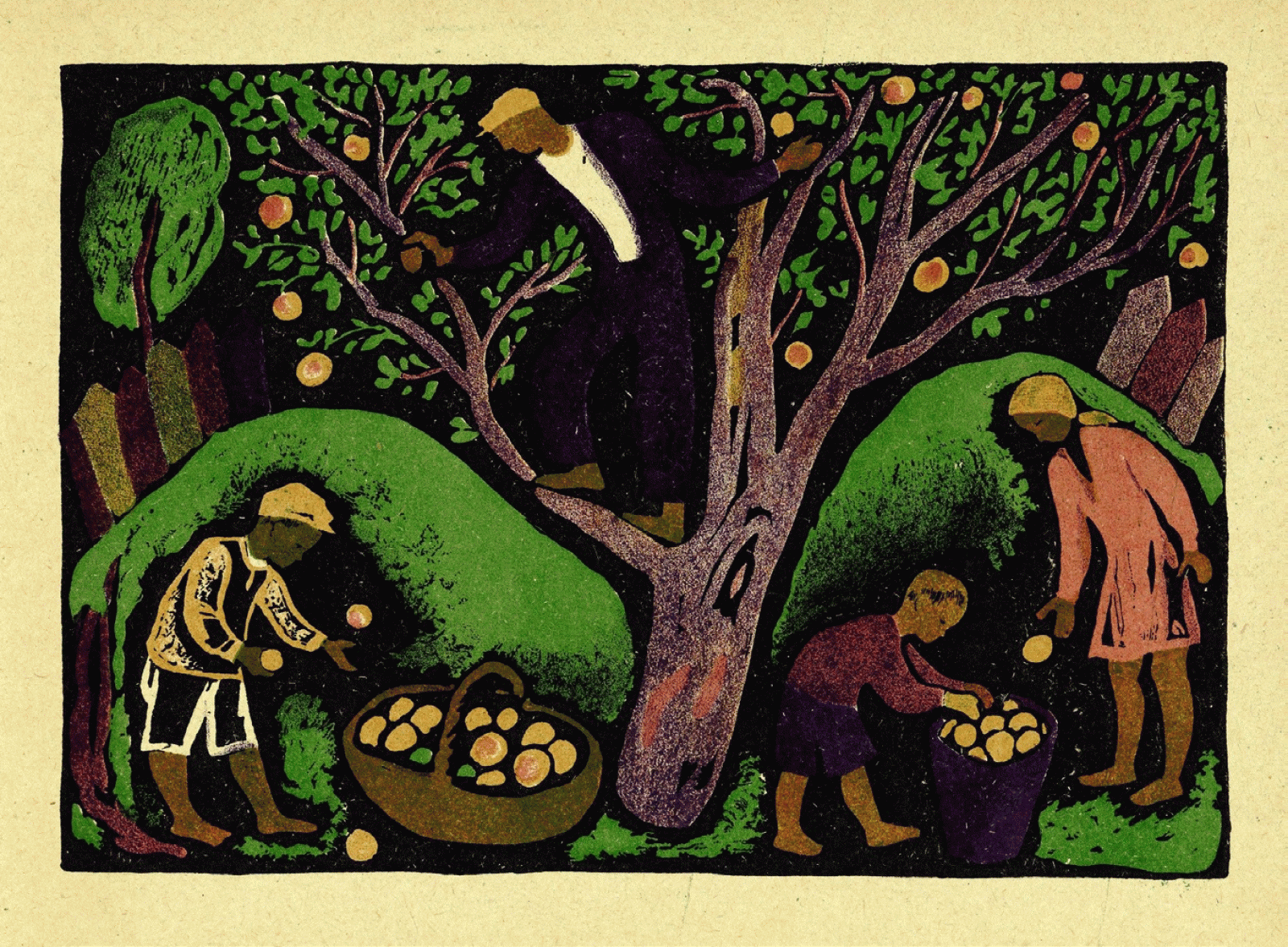Research
The Space of Childhood: The Adler Collection between Architecture, Art, History, Pedagogy and Creativity
James Bradburne (Pinacoteca di Brera and Biblioteca Nazionale Braidense, Milan), Federica Rossi, and Gerhard Wolf
A collaboration of the Kunsthistorisches Institut in Florenz with the Biblioteca Nazionale Braidense, the Pinacoteca di Brera and the Associazione Centro Internazionale di Ricerca della Cultura dell’Infanzia (CIRCI)

Borys Kriukov, Sad-ogorod [Kitchen Garden], Kyiv 1929
This project studies a recent donation to the Biblioteca Nazionale Braidense in Milan: the unpublished correspondence of the architects Hedwig Feldmann and Hans Edward Adler, dating back to their stay in the USSR from 1930 to 1933, as well as their collection of 257 Soviet children’s books, most of which were published between the 1920s and 1933. Hedwig Feldmann, together with Margarete Schütte-Lihotzky, participated in architect Ernst May’s ‘brigade’ in the Soviet Union, and married the architect Hans Edward Adler, also a collaborator of May. From 1932 the couple worked independently from him in Soviet Asia, in particular in Tajikistan.
The project explores the careers of Hedwig Feldmann and Hans Edward Adler, the context in which they worked, and their collection of children’s books. Many of them deal with the transformations of the USSR by means of its industrialization, a process to which May’s brigade contributed. Feldmann and Adler designed various types of buildings, from houses to kindergartens. One of the key foci of the research is the intertwining of architecture, children’s literature and pedagogy. The two architects were attracted by the artistic and architectural culture of different areas of the Soviet Union, for example of Soviet Russia, the Asian republics (Tajikistan, Uzbekistan), and the Soviet Ukraine. Among others, the Adler collection includes bibliographic rarities in the field of children’s literature in the Ukrainian language.


